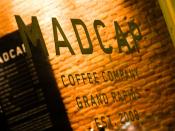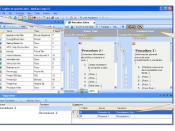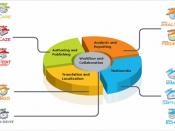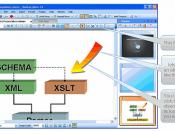IssuesIn 1997 the co-owners of Madcap Craftbrew and Bottleworks, Inc rolled out three flavors of a craftbrew from a handed down family recipe. The company spent $250,000 in development and sold 6,000 cases as an introduction to Heidelberg Distributing Co. The beers won prestigious awards for the flavor and quality of beer. However, industry conditions would prove success difficult as a craft brewery. With the competition with microbrews and craftbrews available, distribution was difficult to obtain at both the distributor and the retail level. Sales were not as expected and forced the owners to consider their products' positioning. Currently the product position was that of an expensive craftbrew, generating little volume and the company was considering a mainstream position as a 'super premium' beer with the potential to generate more volume but would require a greater investment in promotion at the cost of gross margin.
AnalysisThe Madcap Craftbrew and Bottleworks' potential market was identified as people with a graduate school education and a household income over $75,000 of 25 - 34 year old beer drinkers who drink other craft beers.
The competition consisted of the number of craft brewers that bottled beer for local consumption, such as Samuel Adams, One-eyed Jack, Pete's, Blue Moon, and Zima.
The Zebra Beer had been priced at retail at $5.99 per six-pack. The distribution was almost exclusively in the greater Cincinnati area, with a test market in Bloomington, Indiana, population roughly at two million people.
To persuade consumers Madcap launched a comprehensive promotional campaign consisting of radio advertising, POS items, like posters, case displays, bottle caps, signs, t-shirts, hats, buttons, golf tees, coasters, bottle openers, banners and glasses with the Zebra brand logo. Significant funding was provided in developing the business for research, design, legal expenses, and other start-up costs. The income from the beer sales was reinvested in its growth.
(Understanding Madcap's product development, production, and the pricing strategy to compete competitively in the craft brewery market and although the successful launch and stellar awards after the launch will have a significant impact on the company and the positioning of the company's product.
AlternativesStrategic options for Madcap with respect to improving sales of the Zebra brand would have been in the test market and the target of women beer drinkers. Women may not be the largest percentage of beer drinkers in the US, but could possibly have a significant impact on the craftbrews and premium beers. In the initial testing stages, women may not have been considered.
Another alternative would have been marketing more toward creating a loyal following. Current marketing techniques in radio advertising proved that should the advertising not remain consistent, the brand would appear to be more of a fad and consumers will enjoy the beer for an undetermined short period of time and be on to the next of the many competitors in the craft brewery business. Madcap could have considered other forms of media, specifically print, in locally and nationally run publications.
Finally, distribution was successful at the start of the launch of the Zebra brand. It is possible that some negotiations could have been made with Heidelberg Distributions upon the sale of the 6,000 cases. It may have been possible to take the $2/case that was spent on radio advertising and transfer that incurred cost with Heidelberg Distributions on promoting the brand on behalf of Madcap.
ConclusionMadcap Craftbrew & Bottleworks, Inc. has attempted to compete with leading beer companies in the US. Madcap does not have the financial resources or production capabilities to match up to the competition. (Marketing to Madcap's consumers through other means of marketing such as print ads in local and national publications could have proved very successful.
REFERENCESBren, M., Courtner, D., Davis, J., Thams, M., et.al. (2007). Marketing Management: MBA K602. Tampa: Bisk Education.
Daumeyer, Rob. "Beware of too much business" Cincinnati Business Courier (1996). Retrieved April 1, 2007, from: http://www.bizjournals.com/cincinnati/stories/1996/07/01/smallb2.htmlYou have written a very good case analysis and effectively used the fundamental format of Problem -Alternatives - Evaluation of Alternatives - Recommendation(s). However, take a look at my commentsat the end of your Conclusion section. Overall, your analysis and presentation are well thought-out andestablish a good foundation from which MCB can pursue further success in the market.
Take a look at the grammatical corrections made.
Grade: A-Comment from conclusion:This is a little confusing - it is unclear what will have an impact on the positioning, "Madcap's product development, production," etc. or "the successful launch and stellar awards after the launch."





